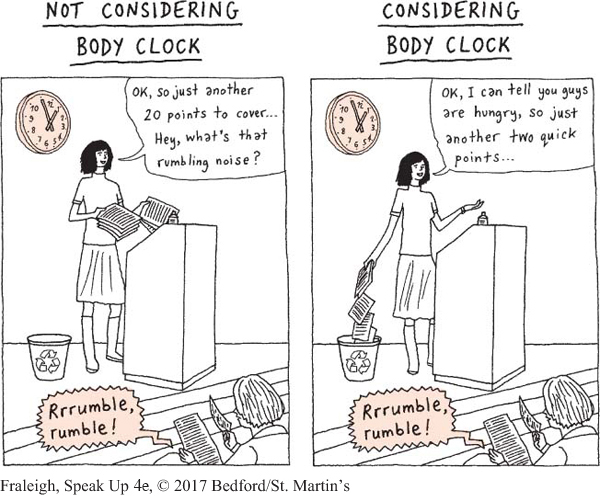Time
Time is an important aspect of any presentation you deliver, in terms of both the time allotted for the speech and your listeners’ own time rhythms in the day. Thus, you will want to consider two aspects of timing—

Presentation time is the length of time you have to deliver your speech. Is it one minute? Five minutes? Twenty minutes? As long as you wish? The answer should shape how you prepare and deliver your presentation.
Page 124
For example, when your presentation time is short, you have to make tough choices about what to include and what to leave out. Remember, though, that television ads—
If your presentation time is relatively long, you’ll have more opportunity to develop your main points, but you’ll also be more at risk of digressing—
Body clock—also known as chronemics—refers to the time of day or day of the week when your audience members will be listening to your presentation. If you have a choice about when to give your class presentation, which days and times would you select? Which would you avoid?

Page 125
If you sought to avoid speaking on a Monday morning, you’d be making a wise choice. Many students are still mentally rooted in the weekend and will have difficulty focusing on your speech. Similar distractions abound for people close to lunchtime, at the end of the day, or at the end of the week.
Nevertheless, you can still deliver an effective speech at such times. For example, you might include more humor or anecdotal references to engage your audience. Or with your teacher’s approval, you might open by asking direct questions of some audience members, which would heighten their attentiveness. Finally, you could simply shorten your speech to match your audience’s attention span.
One of the authors of this book was once invited to give a presentation to a group of lawyers at 3:00 p.m. on a Tuesday. The twenty-